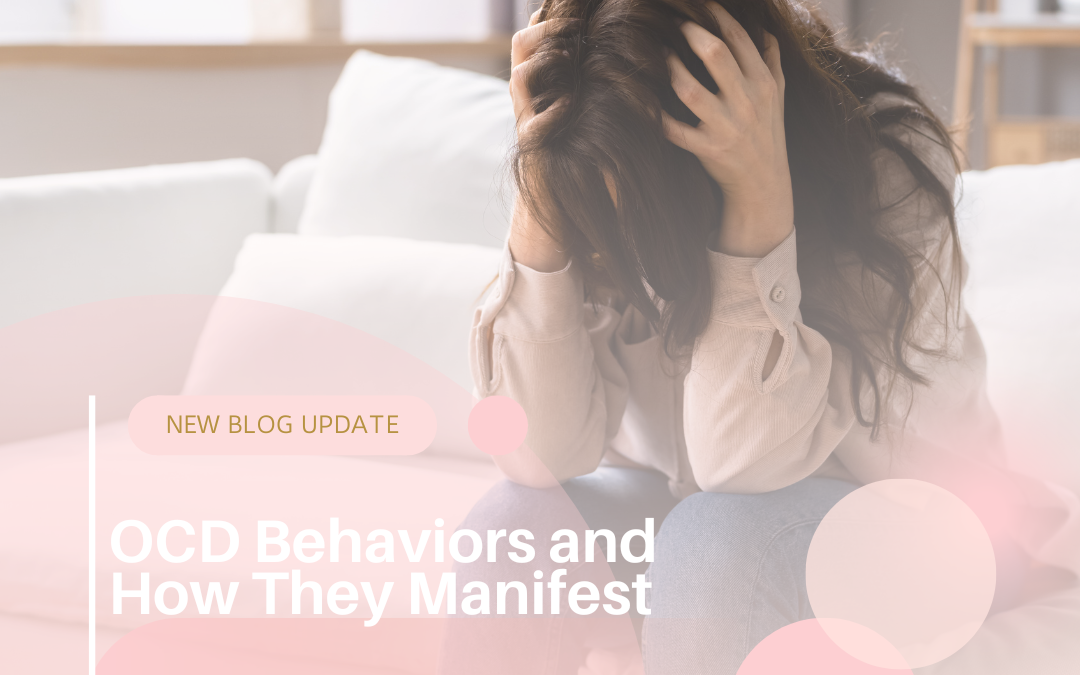Obsessive-Compulsive Disorder (OCD) is a mental health condition marked by persistent, intrusive thoughts (obsessions) and repetitive behaviors (compulsions) performed to reduce distress or prevent feared outcomes. While many people may joke about being “a little OCD,” the reality of living with OCD is far more complex and often debilitating.
In this blog, we’ll explore how OCD behaviors manifest, the emotional toll they take, and how to recognize when it’s time to seek help.
What Is OCD?
OCD is characterized by a cycle of obsessions and compulsions. These elements are closely linked but distinct in nature:
- Obsessions: Unwanted, intrusive thoughts, images, or urges that cause significant anxiety or distress.
- Compulsions: Repetitive actions or mental rituals performed to reduce the anxiety caused by obsessions or to prevent a feared outcome.
While many people have occasional intrusive thoughts or habits, OCD becomes a problem when these thoughts and behaviors interfere with daily life, relationships, and overall well-being.
Common OCD Behaviors and How They Manifest
1. Cleaning and Contamination
This theme often involves an intense fear of germs, dirt, or contamination. People may:
- Obsess over contracting illnesses or contaminating others.
- Engage in excessive handwashing or cleaning routines.
- Avoid certain places, objects, or people perceived as “unclean.”
- Feel compelled to sanitize items repeatedly, even if they are already clean.
For individuals with this type of OCD, the distress often goes beyond a dislike of mess or germs—it’s driven by overwhelming fear and anxiety.
2. Checking and Reassurance Seeking
Checking behaviors are rooted in fears of harm, mistakes, or responsibility. These compulsions may include:
- Repeatedly checking that doors are locked, appliances are turned off, or windows are secured.
- Reviewing emails, text messages, or documents multiple times to ensure no errors or misunderstandings.
- Driving back to verify they haven’t hit someone or caused an accident.
- Asking others for constant reassurance that they didn’t say or do something wrong.
These actions are time-consuming and often fail to alleviate the underlying anxiety for more than a short time.
3. Symmetry and Order
People with this manifestation of OCD feel an intense need for balance, order, or things to feel “just right.” They might:
- Arrange items symmetrically or in a specific order.
- Feel distressed if things are out of place or not aligned.
- Repeat actions (like tapping, blinking, or stepping) until it feels “right.”
- Reorganize spaces repeatedly to achieve a sense of control or perfection.
This type of OCD often focuses on the internal sense of discomfort rather than an external fear.
4. Intrusive Thoughts
Intrusive thoughts are distressing, unwanted mental images or ideas. Common themes include:
- Fear of harming oneself or others.
- Sexual thoughts that conflict with personal values or beliefs.
- Obsessions with religious or moral “purity.”
- Doubts about identity or relationships (e.g., “Do I truly love my partner?”).
Although these thoughts are not reflective of a person’s desires or intentions, the distress they cause can lead to compulsive mental rituals, such as praying, counting, or silently repeating phrases to neutralize the anxiety.
5. Hoarding
Hoarding in the context of OCD is driven by obsessive fears, such as:
- Worry about discarding something that might be useful later.
- Fears of causing harm by throwing something away.
- Emotional attachment to items as symbols of safety or memory.
Unlike Hoarding Disorder, this behavior is usually accompanied by significant anxiety and compulsions to avoid perceived harm.
How OCD Behaviors Impact Daily Life
OCD behaviors can be time-consuming and exhausting. The constant cycle of obsessions and compulsions often:
- Interferes with work or school performance.
- Strains relationships with loved ones.
- Reduces the ability to engage in leisure or social activities.
- Leads to physical symptoms, such as fatigue or skin irritation from compulsive washing.
For many, the shame and stigma associated with OCD prevent them from seeking help, prolonging their suffering.
What Causes OCD Behaviors?
The exact cause of OCD isn’t fully understood, but it’s believed to involve a combination of:
- Genetics: OCD can run in families.
- Brain Function: Differences in brain structure and activity may play a role.
- Environmental Factors: Stressful or traumatic events can trigger or worsen OCD symptoms.
- Cognitive Patterns: Perfectionism, difficulty tolerating uncertainty, or overestimating risks can contribute to the development of OCD.
Understanding these factors can help demystify OCD and foster compassion for those affected.
How to Recognize When It’s OCD
Many people experience occasional worries or repetitive behaviors, but OCD goes beyond everyday concerns. You might have OCD if:
- The obsessions or compulsions take up a significant amount of time (e.g., more than an hour a day).
- They interfere with your ability to function at work, school, or home.
- You feel unable to stop or control the behaviors despite recognizing that they’re irrational or excessive.
- The behaviors cause significant distress.
Conclusion
OCD behaviors are not quirks or preferences—they are symptoms of a challenging mental health condition that requires understanding and support. By recognizing how these behaviors manifest and seeking appropriate treatment, individuals with OCD can regain control of their lives and reduce the impact of their symptoms.
If you or someone you know is struggling with OCD, remember that help is available. Reaching out to a mental health professional is a courageous step toward healing and reclaiming your life.


Recent Comments